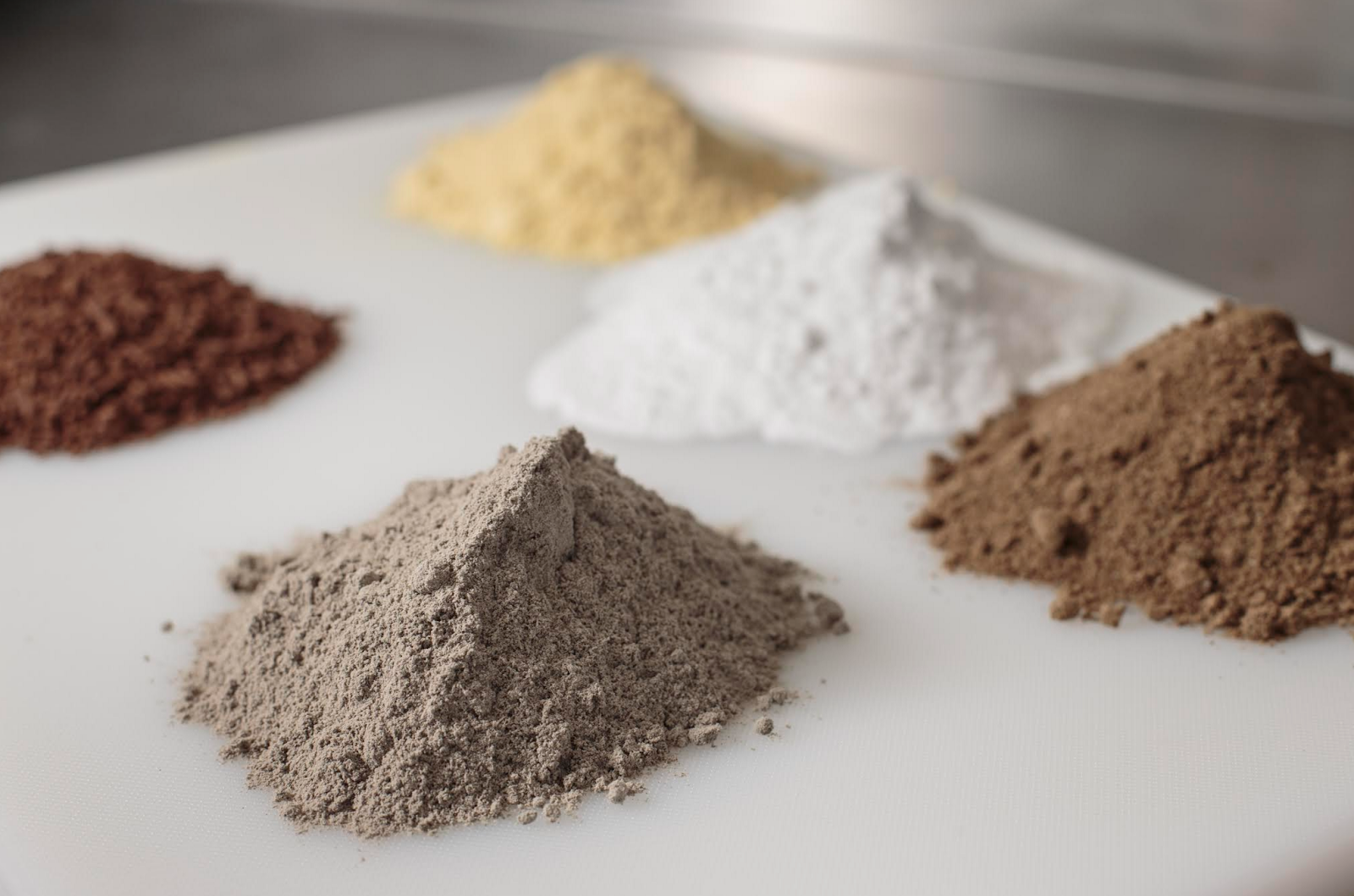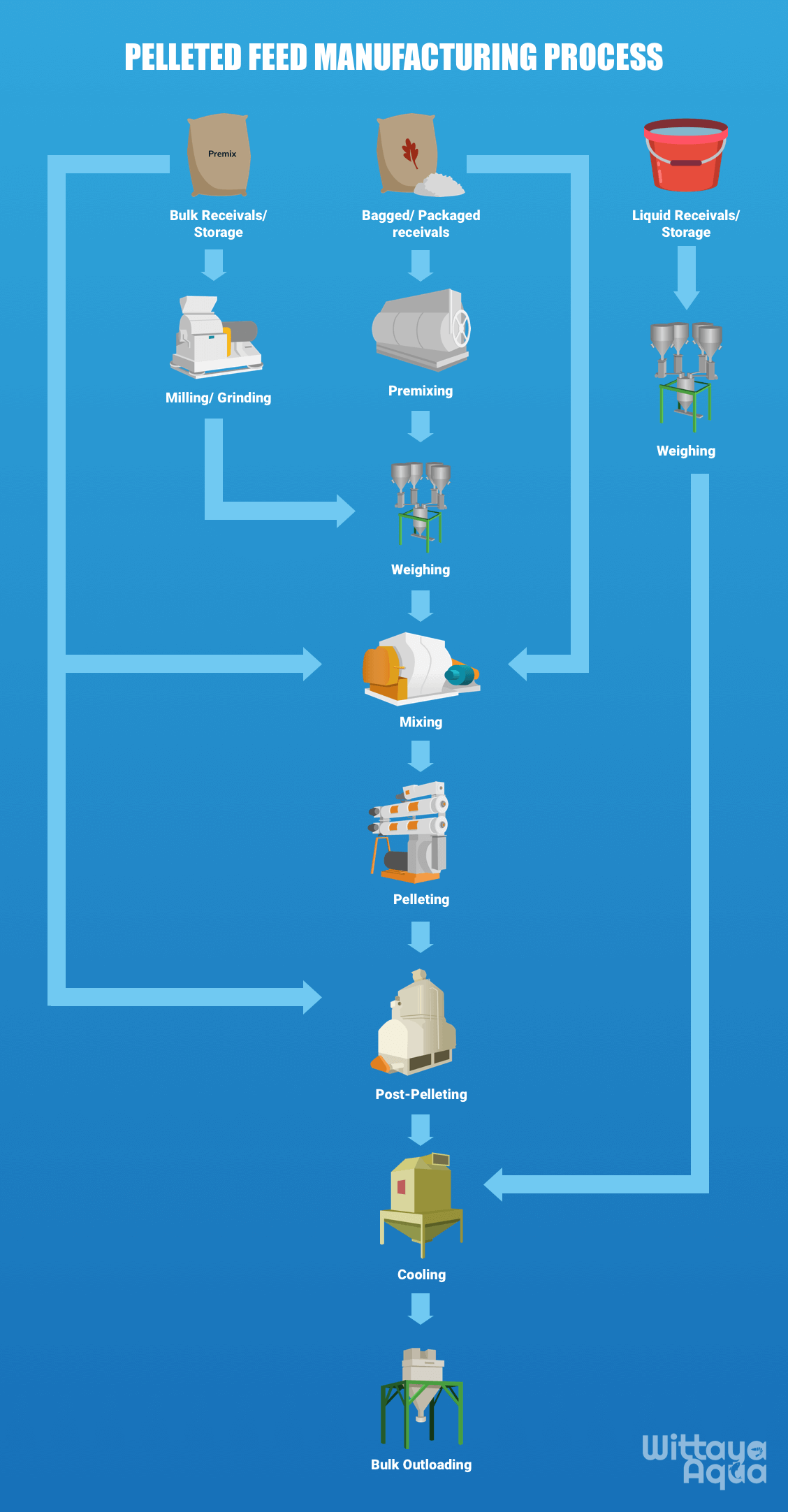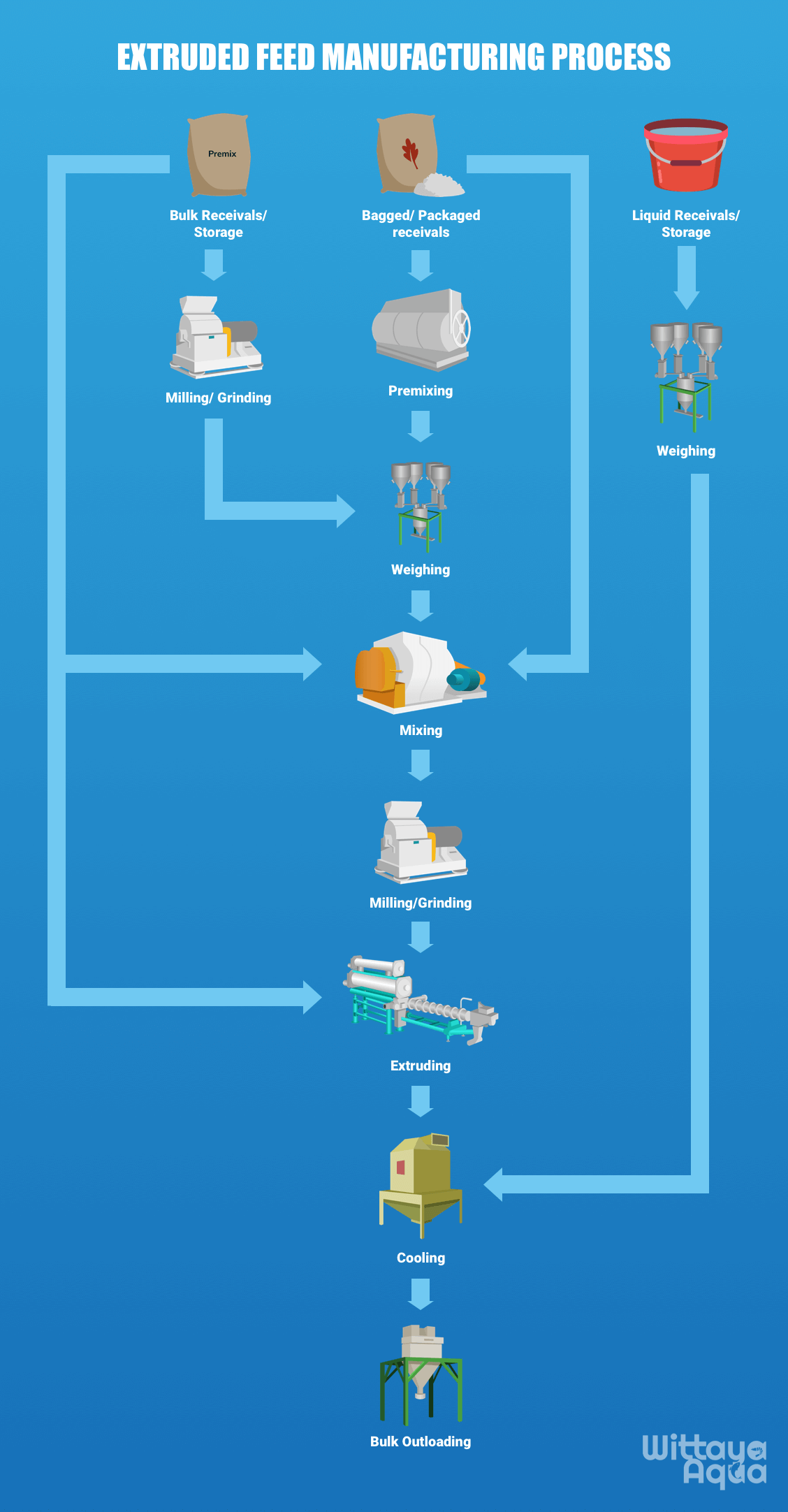A glimpse into Aquafeed Manufacturing
May 08
Article by Supul Amarakoon, Flavia Damasceno
The manufacturing of aquaculture feed is a complex process that involves specialized equipment and systems. Feeds are composed of a large number of feed ingredients, also commonly referred to as “feedstuffs” or “raw materials”. Common ingredients include grains, oilseed meals, grain processing by-products, land animal proteins, fish meal, fish oil, etc. Most feed ingredients are produced and used in a dry form (5 to 13% moisture), albeit a number of feed ingredients are in a liquid form. At the feed mill, feed ingredients are stored in silos, bulk on the concrete floor, in a sack, or in sealed containers.

Figure 1. Ingredients and additives commonly used in feeds for aquatic species (Source: https://theblueeconomychallenge.com/aquaculture-novel-feeds-for-a-sustainable-blue-revolution/)
Ingredients are then passed through a hammer mill/grinder to reduce their particle size and achieve the desired fineness of the grind.
Some ingredients used in smaller volumes are first mixed separately. This is usually referred to as premixing. These are accurately measured and mixed in a batch mixture.
The next steps of the feed manufacturing process depend on the type of the feed that is being manufactured, pelleted (Figure 2), or extruded feed (Figure 3). In this post, we will demonstrate each step of these processes.
Pelleted Feed

Figure 2. The feed manufacturing process of pelleted feed.
After the premix is prepared and bulk receivals pass through the mill, the mixture is then transferred to a second mixer and some of the liquid ingredients are added. The mixing period depends on the equipment being used and the outcome is a homogenous blend of the raw material according to the specified feed formulation. This blend is generally called a “mash”.
The mash is then transferred to a conditioner which is a flow-through vessel where steam is applied to cook (gelatinize) the starch in the mash and make it more digestible and stickier and thus allow the different components in the mash to be held together when pelleted. The conditioner in generally sits above the pelleting mill. The pellet mill itself is made of a circular die and rollers where the mash is forced through a die by the rollers through a series of circular holes. The strands of pellets coming from the die are cut to the appropriate length by a knife. The newly created pellets are hot and contain excess water. This is removed when they pass through a dryer and then they are cooled. Application of thermosensitive feed additives (e.g. feed enzymes) can be made there.
Extruded Feed

Figure 3. The feed manufacturing process of extruded feed.
In an extrusion pelleting, the mash is transferred to a conditioner that often sits just before the extruder. In this conditioner, the mixture is heated up rapidly with steam. The conditioned mash is fed into the extruder. An extruder can be described as a screw pump in which ingredients are subjected to temperature, pressure, and shear, as they pass through the extruder barrel and out through a restrictive opening, called a die. The barrel of the extruder is comprised of barrel heads, screws, flow restrictors (called shearlocks), and a die. The screws work the ingredients from mash to an amorphous continuous dough. Under these conditions, the starch in the feed undergoes gelatinization and the hemicellulose and proteins are melted.
Inside the extruder, the temperature reaches a high level (125-150 C). Since the water cannot evaporate, the water is in a superheated state. At the end of the extruder, hot dough passes through a shaping die, and the dough is released under normal atmospheric pressure and the water can boil off and the extrudate expands. The die design controls the expansion and shape of the product. A knife cuts the extrudate coming off from the die in pellets of appropriate length.
The newly extruded feed is then sent through a dryer where the application of liquid ingredients can be made. After the extrusion process, the pellet has some characteristics that are not obtained in the pelletizing process, such as flotation, and better resistance to crumbling.
After both extruded and pelleted feeds are cooled, they are sieved, weighed, and packed for shipping. Some farmers prevent receiving feeds bags (10 to 45 kg each) while some large aquaculture operations prefer to receive feeds in bulk.
It is important to ensure that the raw materials being used in feed manufacturing are of good quality and in accurate quantities as they can have an immense impact on animal health and growth. As animals at different stages of growth have different nutritional requirements, it is essential to formulate feeds that meet the nutritional requirement feed formulations for each respective stage.
How can this be ensured?
We at Wittaya Aqua develop tools for feed companies to ensure their feeds are meeting the nutritive and digestive requirements of your region, at the lowest cost. We also develop tools to make it easier for feed companies to manage the purchase, storage, and use of the ingredients used in their feed.
Wittaya Aqua develops tools that help feed companies to determine the purchase and use of ingredients in their formulations based on their respective market values and nutritional composition. For that, we use advanced and precise mathematical models to assist feed companies for decision making when purchasing ingredients.
For ingredient companies, Wittaya Aqua develops tools capable of determining the nutritional and economic value of its ingredients, identifying the best-operating markets and prospects for expansion into new markets.
Do you want to want to know more about the services provided by Wittaya Aqua? Request a meeting and one of our representatives will be glad to present the services we can offer to help you to increase the profits of your business.
We offer consulting services! For more expert opinions, you can always reach out to us and book an appointment.
Talk to our Team